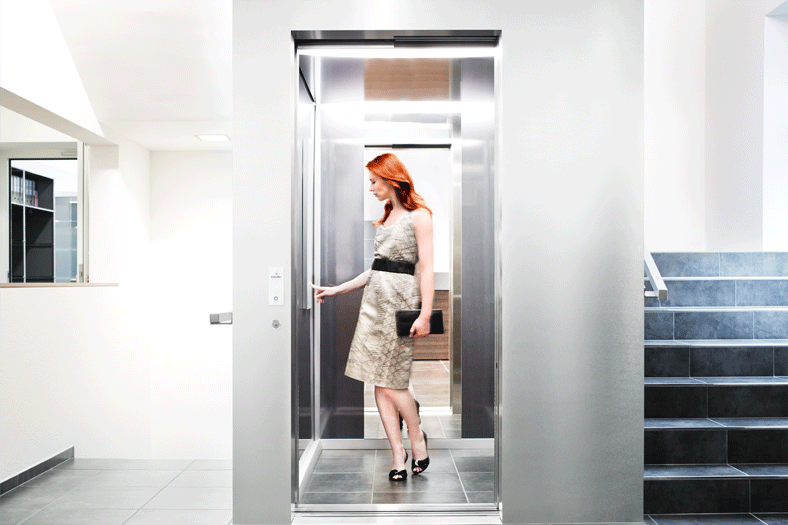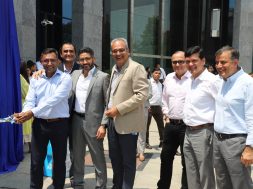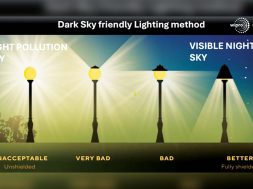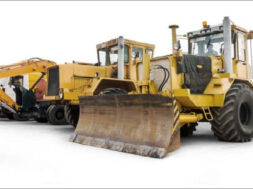Elevating High Contours

With cities growing taller and skyscrapers reaching new heights every day the need for high-speed elevators is growing parallel.
With cities growing taller due to space constraint, the number of high-rise buildings increasing to accommodate people turning to urban settlements. Over the past couple of decades, population in urban settlements have grown multi-fold due to migration for better job opportunity. This also created demand for residential and commercial space in cities like Mumbai, Pune, Delhi NCR, Bangalore, Hyderabad, and many satellite cities being added.
In such a scenario, demand for quality high speed elevators is growing because elevators are the life-line for the high-rise buildings. However, now the role of elevators is not limited to lift people from one floor to another but also value added services such as high-speed comfortable ride with security and safety features. India has now become one of the most preferred markets in the world for the global players in lift and elevator sector. Today, there is tough competition among the companies adding every day new features to raise their market reach.
According to Sebi Joseph, President, Otis India,the taller the building the higher the complexity of design, and the more complex the vertical transportation solution. In tall structures we strive to ensure, smooth passenger flow and serve all floors, such that wait times are no more than 30 seconds after hitting the call button. Other installation challenges include machine hoisting, rail installation and alignment, etc. Considering the height of the project, one has to consider how to depressurize the cabin and build a powerful braking system. Another criticality is segmenting the building into zones. “If it is a mixed-use building, each elevator zone should serve different audiences – from visitors to office workers, to guests, to residents. To effectively manage traffic, a destination dispatch system is key,” says Joseph. The Otis SkyRise system, designed for the world’s tallest buildings comes in varying speeds and today, can travel up to 732 meters per minute at and speeds of 12.2 meters per second. In addition, all SkyRise elevators come standard with the Otis SkyBuild self-climbing construction elevator.
With cities growing taller and skyscrapers reaching new heights every day the need for high-speed elevators is growing parallel. Schindler elevators have been designed to make the elevator rides a ride of an experience. Schindler 5500 and 7000 offer ride speeds as high up to 3 m per sec and 10 m per sec respectively.“When talking about high-speed elevators it’s not just the speed that creates the difference but also the mechanism for acceleration and deceleration. Schindler VVVF Drive Technology plays a pivotal role in giving its high-speed elevators the right push needed for a smooth take-off and landing,” says Ashok Ramachandran, President of Schindler India and South Asia.
Amit Gossain, MD, KONE India said that for buildings with unprecedented heights and structure, advanced technology solutions and the latest people flow Intelligence solutions are used. “Increasing building intelligence, new technology and connectivity provide opportunities for builders, architects and building owners to be more competitive,” said .
Design Challenge
Unlike low rise elevators planning in high-rise elevators are very crucial especially due to the low margin of error. There is hardly any opportunity to make structural changes in a high rise elevator. Applying retrofitters to suit new requirements is nearly impossible without having to change the entire design and making a fresh traffic analysis. Transportation of materials and installation equipment also takes a toll when the height of the building increases.
Swaying is one of the major challenges involved with installation in high rise buildings. This is mainly caused due to high-pressure winds causing resistance with tall structures. “To deal with this deflection additional protection needs to be provided to the structures inside the elevator shaft, the guide rails, machine, and the counterweights,” said Ramachandran.
Inside the shaft of a high rise building an elevator moves like a piston that builds pressure due to the air currents created by the vertical movement of the elevator inside the shaft. This pressure creates vibrations in the building which can be tackled by designing pockets in the shaft incorporated at the initial stage of planning. Another challenge faced by high rise elevators is the stack effect which is caused by the movement of air in and out of the building. This is created due to the difference in indoor and outdoor air density resulting from temperature and moisture differences. To tackle this challenge lobbies should be designed air-locked which will ensure minimal temperature and pressure differences.
Designing a successful vertical transportation system in a mega-tall structure requires closely understanding the customer’s requirements to provide the right solutions. “From pre-installation to installation and then maintenance, there is meticulous planning and preparation required from the engineering and project management teams, so it is safe and efficient, with no surprises or delays, and no disturbance to other building trades,” said Gossain.
Logistically, all these solutions should equal a challenging construction schedule and suitability to Indian conditions so that the construction can proceed unobstructed, regardless of external weather conditions. Innovative technology solutions that require less labour and improved safety enhance vertical transportation and efficiency during the construction of the building. Such solutions are energy-efficient and environmentally sustainable too.
Crucial Parameters
For rapid urbanisation and increasingly high-rise buildings that outline smarter cities around the world, vertical transportation and elevator technology are the key enablers. The design and construction of such buildings and their vertical transportation systems need to be balanced with the latest People Flow Intelligence solutions while increasing convenience and efficiency. It is the improvements in elevator safety, comfort, speed, quality, space efficiency, and performance that have become challenges as well as opportunities in vertical transportation. There should be safer and faster solutions for access and destination control, information communication and equipment monitoring.
“To design solutions that complement the unique architecture of the building and provide excellent ride comfort and smooth people flow, are the key challenges. However, at KONE, our approach has been to take the challenging situations as opportunities and address them with new solutions that are innovative, functional, efficient and adaptive,” said Gossain.
Developers, architects, elevator consultants and elevator companies are collaborating better than ever to ensure the success of a project. The involvement of elevator companies and all parties coming together at the early stages helps shape the concept and design, with everyone’s points of view taken into consideration. This helps in having a smooth & efficient passenger experience on the elevators. Elements like hoist way dimensions, expected number of occupants and visitors to the building, traffic patterns, code compliance, ride quality parameters, local project management capabilities and cross-functionalities etc. are things that must be addresses early on, and in collaborative fashion.
Otis has had expertise in handling massive projects across the world like, the Burj Khalifa, Shanghai World Financial Centre, Christ the Redeemer, etc. Otis India is providing the vertical transport solutions for The Statue of Unity, named the world’s tallest statue standing at a height of 182 meters, spread over 20,000 square meters. The statue will have ten Otis elevators, including the high speed Skyrise elevator, which will run at a speed of four meters per second (MPS).
Better Access
Elevator planning in high-rise buildings is a very complex and time-intensive process. Building access plays a key role in the development of high rise solutions. Expert traffic analysis becomes essential right from the nascent stage of high rise construction projects to ensure the building is equipped with the optimum set of elevators to manage the building traffic with minimum loss of rentable space.
Planning with respect to capacity and wait time analysis with logically planned buffers for the probable population and peak hour traffic demands will ensure a seamless movement of people at all walks.
“Associated planning which play an important role includes examining certain key parameters like the height of the building and its individual storeys, distribution of the population throughout the building, main entrance level(s) (points of entry and exit), distribution of population over elevator groups (if the same destination can be reached using more than one group), stair usage etc,” Ramachandran.
Schindler’s advanced plan and design tool adds key-value on this front, by helping architects and customers alike to plan for the optimum elevator configuration while designing their buildings. It helps not only in planning, but this dynamic tool also enables architects to create elevator layouts, elevator traffic study and tender documents in a customized manner for their projects. Moreover, the tool helps architects and designers in all kinds of facilities planning based on its type and usage, be it residential, commercial, hotel, hospitals, etc.
“When talking about high-speed elevators it’s not just the speed that creates the difference but also the mechanism for acceleration and deceleration.” says Ashok Ramachandran, President of Schindler India and South Asia.
Ashok Ramachandran, President of Schindler India and South Asia.
“Increasing building intelligence, new technology and connectivity provide opportunities for builders, architects and building owners to be more competitive,”
Amit Gossain, MD, KONE India.
“If it is a mixed-use building, each elevator zone should serve different audiences – from visitors to office workers, to guests, to residents. To effectively manage traffic, a destination dispatch system is key.”
Sebi Joseph, President, Otis India,
Cookie Consent
We use cookies to personalize your experience. By continuing to visit this website you agree to our Terms & Conditions, Privacy Policy and Cookie Policy.









